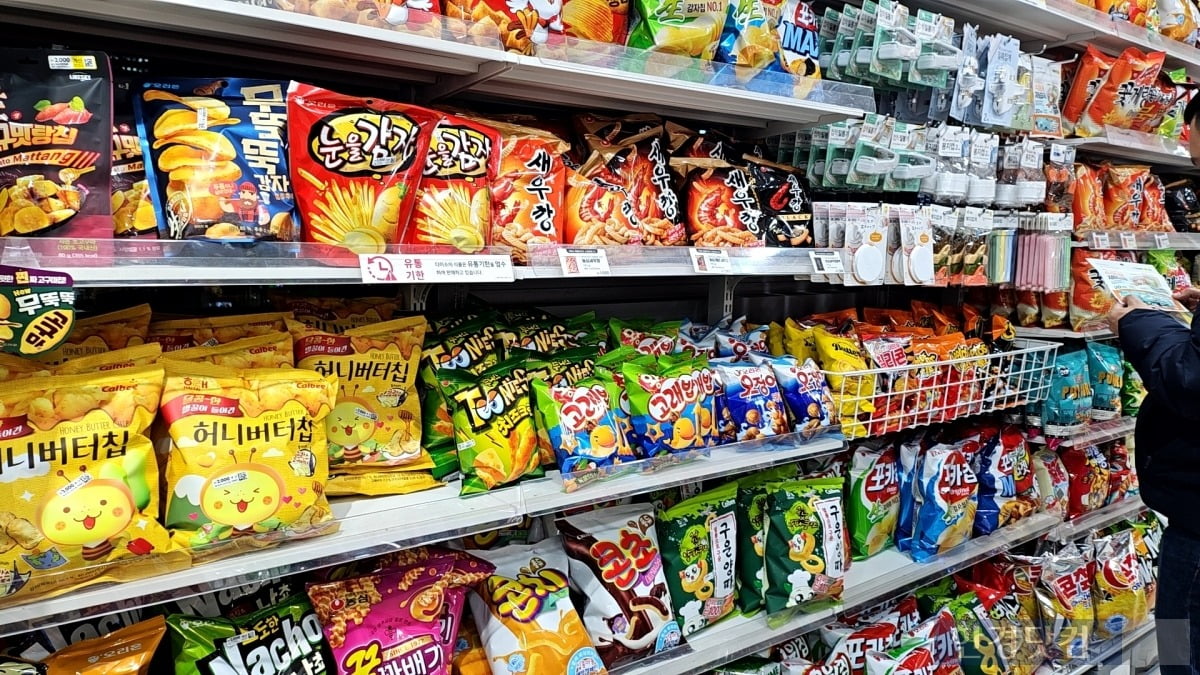A Canadian's Surprising Korean Snack Flavor Review
Have you ever looked at snacks abroad and thought, "Why do they all taste so similar? Why are they all so salty?" On the other hand, I was just as shocked when I saw the snacks that are so familiar to Koreans. Recently, when a famous artist introduced Korean snacks on a U.S. talk show, the host looked flustered, and I could understand their reaction. Although we see nothing surprising, their reaction was due to a fundamental difference in the perception of snacks between Korea and the West.
Upon investigation, I found a few unique characteristics of Korean snacks that I hadn't realized myself.
The Taste of the Sea, and Unexpected Ingredients
The most unique characteristic of Korean snacks is that there are so many seafood flavors. Saewookkang (Shrimp Crackers), Squid Peanuts, and Cuttlefish Chips were all very new to me, but my Korean friends saw them as completely normal. It was because Korea's food culture, which enjoys seafood as it is surrounded by the sea on three sides, is directly reflected in its snacks.
 And another Korean snack that surprises my Western friends is the stick-shaped sausage. For us, a sausage obviously brings to mind pork. But the snack sausages eaten in Korea are often made from 'processed fish,' so the taste itself is quite unfamiliar.
On the other hand, I also found myself flustered by a Western snack with my Korean friends—the meat pie. I learned that Koreans find it strange to have meat inside a pie, making them confused about whether it's a snack or a meal. While these unfamiliar tastes can be surprising, they also become a new and fun culinary experience.
Korean Snacks That Blur Boundaries with 'Complex Flavors'
Another characteristic of Korean snacks I noticed is the complex and bizarre flavor combinations. Western snacks are mostly potato or corn-based, with only familiar flavors like cheese, herbs, or chili added. This is why long-loved classics like Pringles and Oreos are so popular.
However, Korea adds not only potato and corn but also 'fruit flavors' like strawberry, banana, and melon to their snacks, and they even mix them. Seeing snacks with flavors of seafood, tteokbokki, kimchi, jjajangmyeon, and even 'bibim-myeon' made me think, "Why on earth are they doing this?"
And another Korean snack that surprises my Western friends is the stick-shaped sausage. For us, a sausage obviously brings to mind pork. But the snack sausages eaten in Korea are often made from 'processed fish,' so the taste itself is quite unfamiliar.
On the other hand, I also found myself flustered by a Western snack with my Korean friends—the meat pie. I learned that Koreans find it strange to have meat inside a pie, making them confused about whether it's a snack or a meal. While these unfamiliar tastes can be surprising, they also become a new and fun culinary experience.
Korean Snacks That Blur Boundaries with 'Complex Flavors'
Another characteristic of Korean snacks I noticed is the complex and bizarre flavor combinations. Western snacks are mostly potato or corn-based, with only familiar flavors like cheese, herbs, or chili added. This is why long-loved classics like Pringles and Oreos are so popular.
However, Korea adds not only potato and corn but also 'fruit flavors' like strawberry, banana, and melon to their snacks, and they even mix them. Seeing snacks with flavors of seafood, tteokbokki, kimchi, jjajangmyeon, and even 'bibim-myeon' made me think, "Why on earth are they doing this?"
 This cultural characteristic is also reflected in the language. The word 'gwaja' in Korean is a very comprehensive and broad concept. In English, there is no single word that corresponds exactly to 'gwaja,' so we categorize them by taste and texture into chips, crackers, and cookies. I believe the Korean tendency to break the boundaries of familiar tastes and explore new ones is directly embedded in their snacks.
On the Amazing Creativity of Koreans
After this fascinating analysis of Korean snacks, a thought from a Korean friend who often talked about Korea's 'Pali-Pali' culture and its 'spirit of constantly trying new things' came to mind.
"Koreans never settle for what's already there and constantly try new things. It's the same with snacks. They create flavors that don't exist and make existing flavors new. That's Korea's strength."
I believe the complex and diverse flavors of Korean snacks are a result of the unique culture and a tendency to creatively use limited ingredients and explore new tastes. My Canadian friends, the next time you come to Korea, be sure to try a variety of snacks and find your own favorite flavor!
This cultural characteristic is also reflected in the language. The word 'gwaja' in Korean is a very comprehensive and broad concept. In English, there is no single word that corresponds exactly to 'gwaja,' so we categorize them by taste and texture into chips, crackers, and cookies. I believe the Korean tendency to break the boundaries of familiar tastes and explore new ones is directly embedded in their snacks.
On the Amazing Creativity of Koreans
After this fascinating analysis of Korean snacks, a thought from a Korean friend who often talked about Korea's 'Pali-Pali' culture and its 'spirit of constantly trying new things' came to mind.
"Koreans never settle for what's already there and constantly try new things. It's the same with snacks. They create flavors that don't exist and make existing flavors new. That's Korea's strength."
I believe the complex and diverse flavors of Korean snacks are a result of the unique culture and a tendency to creatively use limited ingredients and explore new tastes. My Canadian friends, the next time you come to Korea, be sure to try a variety of snacks and find your own favorite flavor!
